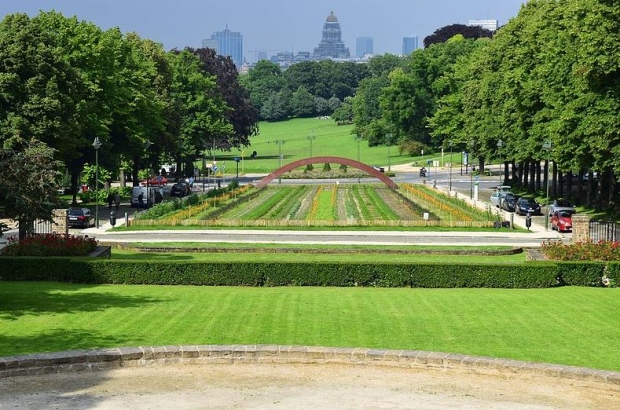- Daily & Weekly newsletters
- Buy & download The Bulletin
- Comment on our articles
A quarter of Brussels residents have no easy access to green space
Almost a quarter of a million Brussels residents lack a park within walking distance, and the percentage of green space is below the norm in many municipalities, according to an analysis by Greenpeace Belgium and DataLab.
The study found that the problem was particularly acute in municipalities such as Ixelles, Saint-Gilles and Schaerbeek.
“Trees and parks are unevenly distributed,” said Ruth-Marie Henckes, biodiversity campaign leader at Greenpeace Belgium.
"The richest neighbourhoods and municipalities are the greenest, while the poorest people only look out on to concrete.
"As a result, the health benefits of a green living environment are also unevenly distributed. Trees make us happier, healthier and more resilient to the climate crisis.”
Greenpeace's analysis maps how much access residents have to urban nature for each building in Belgium, using the so-called 3-30-300 rule: everyone should be able to see at least three trees from their house, there should be at least 30% foliage in the residential area and there should be green space at a maximum distance of 300 metres from the house.
This rule is an international guideline for urban greening, which has also been recognised as a standard by the Flemish government.
Several neighbourhoods in Brussels scored zero, meaning residents cannot see trees from their homes, have insufficient foliage,and do not live close to a green space. These include neighbourhoods in Brussels-City, Molenbeek, Saint-Josse, Koekelberg and Saint-Gilles.
In parts of Saint-Gilles, Etterbeek and Saint-Josse, there is not a single property that achieves the 30% tree canopy qualifier.
On average, foliage visibility is 11.5% in Molenbeek, 12.2% in Saint-Josse and Saint-Gilles, and 15.6% in Brussels-City and Anderlecht.
On the opposite end of the spectrum, several municipalities contain neighbourhoods that fully comply with the 3-30-300 rule, namely in Uccle, Auderghem, Woluwe-Saint-Pierre, Woluwe-Saint-Lambert and Watermael-Boitsfort.
Overall, every Brussels resident has 55m² of green space available. In a comparable city like Amsterdam, the amount is almost double at 96m².
Available green space in Brussels has been in decline in recent decades. Between 2003 and 2016, Brussels lost as much as 14% of its green space.
Greenpeace called on politicians to protect nature, noting that while the previous Brussels regional government promised to protect and preserve at least 25% of its territory as green space by 2030, that target is 5% lower than the international agreement made by Belgium at the COP15 climate conference. Nevertheless, Greenpeace called it “an important step forward”.
The issue goes beyond the capital, as well, with 72 of Belgium's 100 most populous towns and cities having less than a tenth of buildings comply with the rule, including Antwerp, Bruges, Ghent, Kortrijk, Namur, Charleroi and La Louvière.
Genk is the city with the best results. Some 52.6% of its buildings comply with the 3-30-300 rule. Mouscron is the lowest-scoring city: not a single building complies with the 3-30-300 standard, and half of them do not even have a small park nearby.
Nationwide, at least one million people do not even have an at least 0.2 hectare park within 300 metres of their home.

















